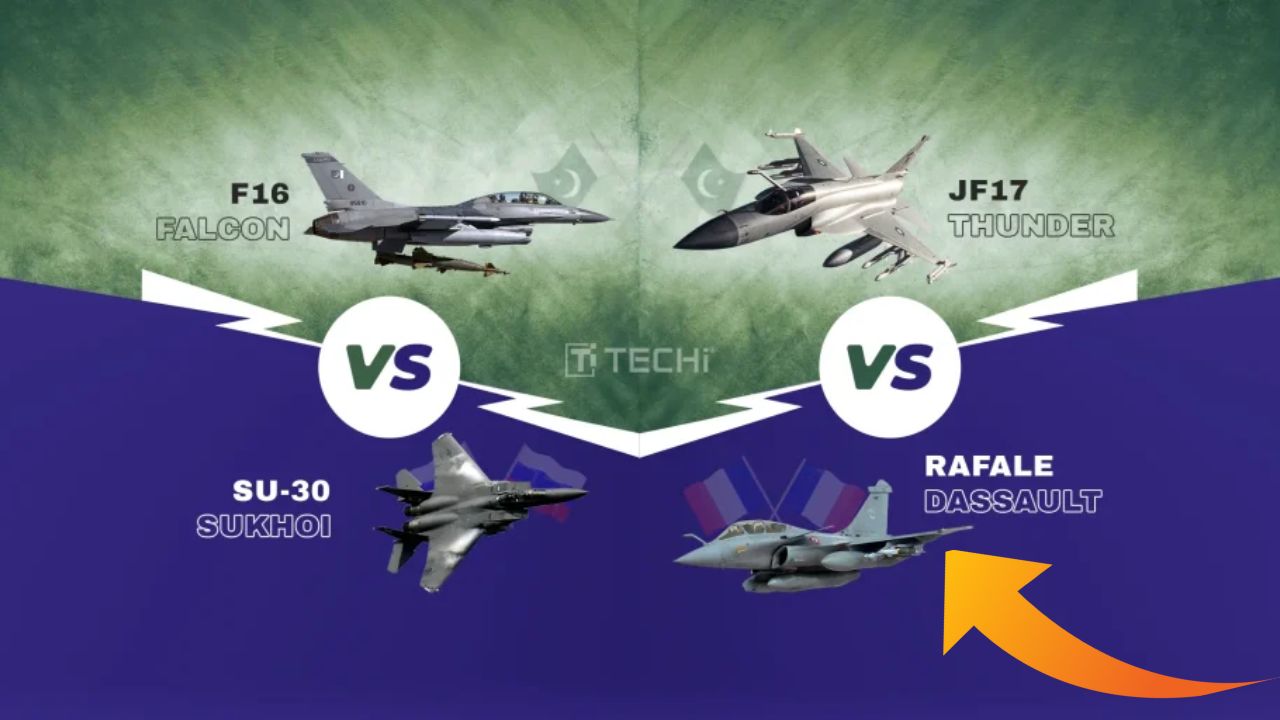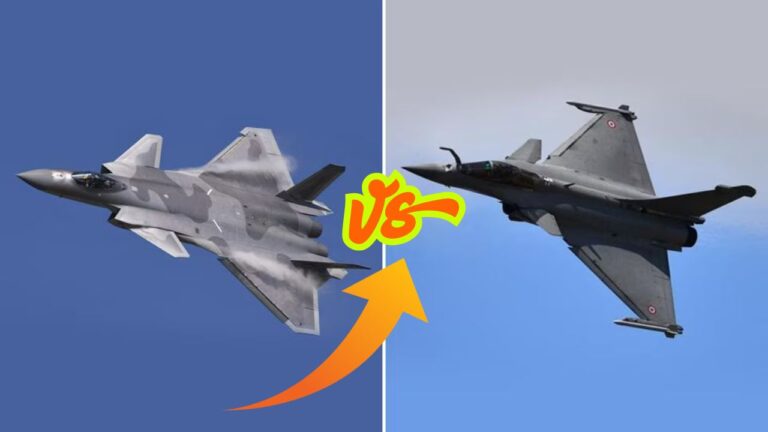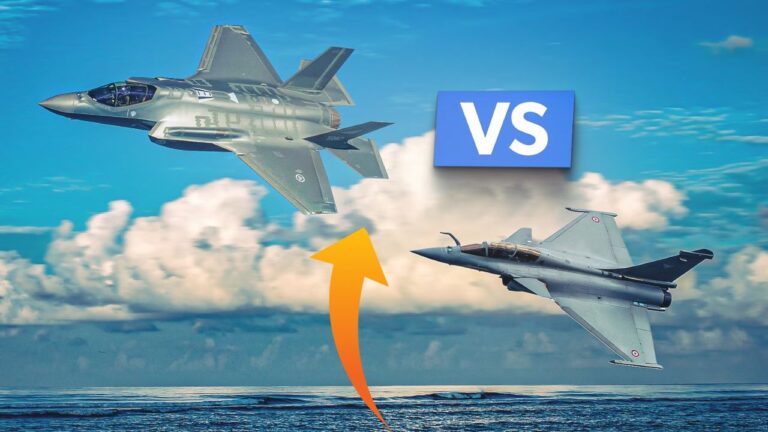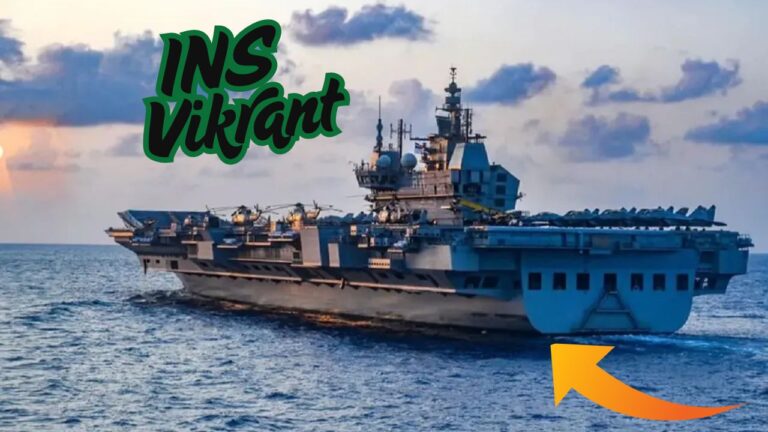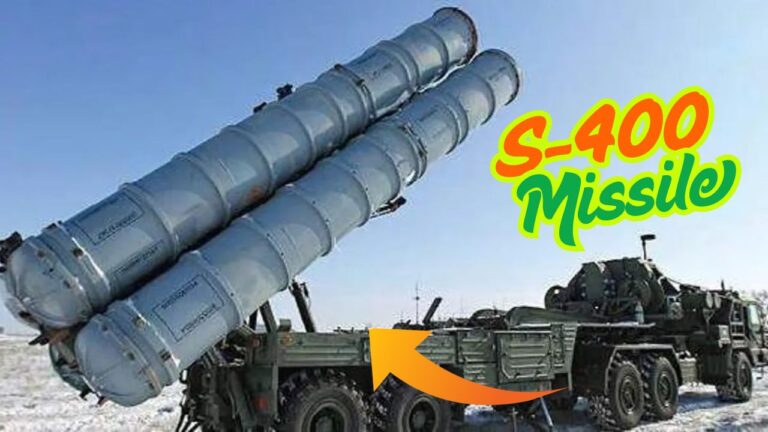Rafale vs JF17 Thunder and Su30 vs F-16: A Comparative Analysis
In a sharp rise in tensions, the Pakistan Air Force (PAF) claims it shot down three Indian Rafale jets, a MiG-29, an SU-30, and a Heron drone in recent air strikes. This incident has sparked renewed debate about the strategic value of the Dassault Rafale, France’s advanced multirole fighter. Many are comparing it to the JF-17 Thunder, a collaboration between Pakistan and China. As hostilities flare between these nuclear-armed nations, the concept of air superiority is under serious examination.
India has spent significantly on advanced aircraft, but this claim raises important questions. Does having cutting-edge technology guarantee success in battle? Or do rapid deployment, tactical skill, and cost-effectiveness, as shown by the JF-17, provide a greater advantage? As both countries rethink their aerial strategies, the world watches closely to see how modern air power is truly defined in South Asia.
Rafale vs JF17 Thunder: A Comparative Analysis
| Feature | Dassault Rafale | JF-17 Thunder |
|---|---|---|
| Generation | 4.5th-generation | 4th-generation |
| Role | Multirole Fighter | Multirole Fighter |
| Engine | Twin-engine (Snecma M88-2) | Single-engine (Klimov RD-93 or WS-13) |
| Thrust-to-Weight | Higher due to twin engines | Moderate |
| Top Speed | Mach 1.8 (1,915 km/h) | Mach 1.6 (1,960 km/h) |
| Range | 1,850 km (extendable via refuelling) | 3,482 km (unrefueled) |
| Height | 5.34 meters | 4.72 meters |
| Wingspan | 10.80 meters | 9.48 meters |
| Payload Capacity | 24.5 tonnes | 12.4 tonnes |
| Avionics | Advanced AESA radar, SPECTRA EW suite | KLJ-7 radar, basic ECM/EW systems |
| Unit Cost | ~$74 million (Rafale B) | ~$25–32 million |
| Country of Origin | France | China-Pakistan |
| Combat Record | Extensive (Libya, Mali, Iraq) | Limited (deployed by PAF) |
Su-30MKI vs F-16: A Comparative Analysis
| Feature | Su-30MKI | F-16 |
|---|---|---|
| Generation | 4.5th-generation (dual-engine) | 4th-generation (single-engine) |
| Role | Multirole Fighter | Multirole Fighter |
| Engine | Twin-engine (Saturn AL-31FP) | Single-engine (Pratt & Whitney F100) |
| Max Speed | Mach 2 (2,120 km/h) | Mach 2.05 (2,175 km/h) |
| Length | 21.9 meters | 15 meters |
| Wingspan | 14.7 meters | 9.96 meters |
| Range | Long-range (Extended with air refueling) | 4,220 km with drop tanks |
| Avionics & Sensors | IRST, advanced radar, EW systems | Modern AESA radar, ECM systems |
| Combat Role | Air superiority, strike, multirole | Air superiority, precision strikes, dogfighting |
| Weapons | Air-to-air missiles, air-to-ground missiles | Air-to-air missiles, precision-guided bombs |
| Combat Record | Effective in multiple roles but faced recent setbacks | Widely used in numerous global conflicts, strong combat success |
| Cost | $62 million (per unit) | $30–70 million (depending on variant) |
Strategic Implication
The Su-30MKI and F-16 face off, showcasing the tech skills of both aircraft. This highlights how crucial tactical execution and real-time data are in modern air warfare. Recent Indo-Pakistani clashes show that even advanced jets can be vulnerable in fast-changing combat situations. These fighter jets symbolize their nations’ military strategies and doctrines.
The ongoing rivalry in South Asia shapes aerial tactics and influences how countries think about air superiority and defense. These confrontations have wider effects on international relations. They also reveal the links between air power, national security, and geostrategic positioning. The results of these encounters will likely influence future conflicts and defense policies in the region and beyond.

